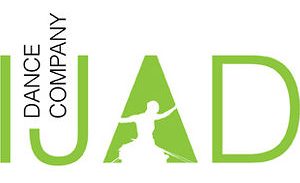
Recently, I was invited to attend the first ever TEDinArabic in Doha, Qatar, and deliver a talk and workshop on creative technology, hybrid performance and sensography. It was a fascinating experience and I was able to meet so many interesting people from all kinds of backgrounds.
As a participant and an audience member, I realised that providing a space for individuals to express their stories is crucial for a healthy democracy and for promoting artistic expression.
We witnessed female scientists, a Palestinian graffiti artist who believes in peace, physicist poets, a dance company working in hybrid, architects with a strong cause to save and support important buildings. I am still thinking about the world that I witnessed and took part in.
I will talk about two out of many sessions that left a trace on me.
First, a session led by a physicist and poet Mahdi Mansour who asked: why can’t we put equal emphasis on physics and poetry in our educational system? Why choose expression over facts? Don’t we need to understand how to express a logical thought?

Both involve the exploration of the world around us, and both require creativity and imagination.
In poetry, language is used to convey emotions, experiences, and ideas in a way that is often abstract and metaphorical. This can be a powerful tool for exploring complex ideas and expressing things that may be difficult to put into words.
In physics, scientists use mathematical models and experiments to understand the physical world and how it works. This involves a lot of creativity and imagination, as scientists must come up with new ideas and theories to explain phenomena that may not be immediately obvious.
When poetry and physics are combined, they can offer a unique and fascinating perspective on the world around us. Poets can use scientific concepts to explore deeper themes and ideas, while physicists can use poetry to communicate their discoveries in a more accessible and engaging way.
When people are able to share their stories, they are able to connect with others and build a sense of community. This can lead to greater understanding, empathy, and respect for different perspectives and experiences.
Artistic expression can also play a key role in this process. Art has the power to convey emotions and experiences in a way that can be more powerful than words alone. It can bring people together and create a shared experience that transcends language, culture, and other barriers.
In addition to promoting individual expression, offering a platform for personal stories and artistic expression can also help to highlight important social and political issues. When people are able to share their stories and experiences, it can bring attention to issues that may have been overlooked or ignored in the past.
The second session that left a mark on me was about architects who become cause holders, Mona Al Hallak.
When an architect becomes a cause driver for a historical building that symbolises war, they are taking on an important role as a steward of history and cultural heritage. Historical buildings are more than just physical structures: they are living symbols of the people, events, and values that shaped our world.

Archives found
By preserving and restoring historical buildings, architects can help to keep the memories of the past alive and ensure that future generations have the opportunity to learn from and appreciate the achievements and sacrifices of those who came before them.
When an architect approaches the restoration of a historical building as if it were a living being, they are acknowledging the history and significance of the building and treating it with the care and respect it deserves. This can involve extensive research into the building’s history, careful analysis of its structural integrity, and the use of materials and techniques that are appropriate for its age and style.

The design of the building, is it put to a good use?
By treating these buildings as living beings, they can help to ensure that they remain a vital and meaningful part of our shared history for generations to come.
Both of these sessions will leave me thinking about the stories raised for a long time to come.
